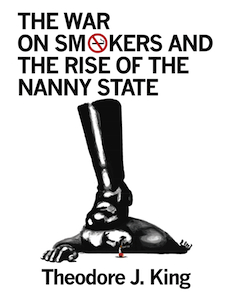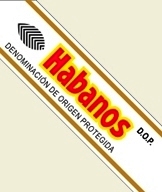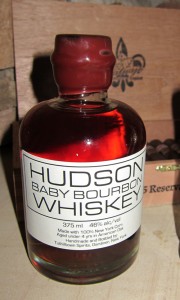“Theodore King has done a yeoman’s job assembling evidence that the success of tobacco zealots has become a useful template for those who want to use health issues to control our lives. The War on Smokers and the Rise of the Nanny State is not only a story about the attack on tobacco users, but a story about how decent Americans can be frightened, perhaps duped, into accepting phony science, attacks on private property rights, and rule of law. One need not be a smoker to be alarmed by the underlying hideousness of the anti-tobacco movement.”
So writes Walter E. Williams, syndicated columnist and professor of Eeconomics at George Mason University, about Ted King’s book, The War on Smokers and the Rise of the Nanny State . King is a tobacco enthusiast and avid pipe smoker who has worked in politics for three decades in his home state of Oklahoma and in Washington, D.C. He is a writer for The Oklahoma Constitution and lives on a farm with his family, including several dogs. I recently spoke with King about his book and the ever-expanding war on smokers.
. King is a tobacco enthusiast and avid pipe smoker who has worked in politics for three decades in his home state of Oklahoma and in Washington, D.C. He is a writer for The Oklahoma Constitution and lives on a farm with his family, including several dogs. I recently spoke with King about his book and the ever-expanding war on smokers.
Stogie Guys: What made you decide to write The War on Smokers?
Ted King: I wrote The War on Smokers and the Rise of the Nanny State for therapy. Smoking bans are completely unjust, and they drive me NUTS! I had been going to www.smokersclub.com and thought: I can compile these stories I had read there, do my own research, and write a book about this issue. I didn’t know at the time that this would take me to England, Wales, and Ireland to further my research. That part was fun.
SG: In your book, you refer to the anti-tobacco movement as a “war on smokers,” not on smoking. Why?
TK: It is a war on smokers, not on smoking, because smokers are in the crosshairs of these anti-tobacco fanatics. These control-freak bastards want to tax the hell out of smokers, and some of them want to get smokers fired from their jobs. Some want smokers evicted from their domiciles. They even want to make smokers fill out a form for the “right” to purchase tobacco products. They want to screw smokers over. That is why I entitled the book the way I did.
SG: Who makes up the anti-tobacco movement? What drives them?
TK: The American Cancer, Heart, and Lung organizations, the Robert Wood Johnson Foundation, and Pfizer, the pharmaceutical company, are behind this crusade. The American Cancer, Heart, and Lung organizations have, in my humble opinion, subordinated their efforts to cure cancer to the primary goal of stamping out the enjoyment of tobacco products. Power to control, not save lives, is what drives them.
SG: Who funds the organizations of that push these laws?
TK: The American Cancer, Heart, and Lung organizations and the Robert Wood Johnson Foundation and Pfizer are funding these efforts along with allies like the Campaign for Tobacco-Free Kids, truth.org, and federal, state, and local health departments.
SG: What was the most surprising thing you learned while writing this book?
TK: Smoking bans are just the template for more bans, like bans on fireplaces and on certain foods, etc. In other words, they give rise to a bigger and more powerful nanny state. Chapter 9 in my book documents this effort to expand bans beyond smoking.
SG: What is the single most outrageous nanny state law that you came across?
TK: The most outrageous example is that in Holland it is now against the law to smoke tobacco inside public places, even though smoking pot is legal!
SG: What is the one message that smokers most need to tell nonsmokers who are ambivalent about these issues?
TK: They are coming for nonsmokers next! And nonsmokers do not need to be in the very few places where smoking is permitted if they don’t want to be. So smokers should be left alone in what are, for all intents and purposes, the ghettos of these persecuted people. They aren’t bothering nonsmokers.
SG: What will it take for us who oppose the anti-tobacco movement to win this war?
TK: The War on Smokers and the Rise of the Nanny State teaches smokers what they can do to win this war… and it is a war. In this election year, it is especially important to know where local and state candidates stand on smoking bans. Smokers must tell those who support bans they won’t vote for them. We must become the loudest special interest group of this and future elections!
Many thanks to Mr. King for taking the time to talk to us. He wanted readers to know that cigar enthusiasts who purchase a membership to Cigar Rights of America for three years or more will receive a free autographed copy of The War on Smokers and the Rise of the Nanny State. Get your copy by joining CRA or by purchasing a copy from Amazon or Barnes & Noble.
–Patrick S
photo credit: Stogie Guys



 2)Â It was reported this week that Cuban cigar sales
2)Â It was reported this week that Cuban cigar sales 

 Cigar maker Rolando Reyes, Sr. is known throughout the industry for his dedication to quality control. Prior to his retirement in 2007, at the age of 83, his work habits included toiling at his Honduran factory long after hours and inspecting individual cigars up to seven times before they hit the shipping crates.
Cigar maker Rolando Reyes, Sr. is known throughout the industry for his dedication to quality control. Prior to his retirement in 2007, at the age of 83, his work habits included toiling at his Honduran factory long after hours and inspecting individual cigars up to seven times before they hit the shipping crates.

 Patrick Ashby
Co-Founder & Editor in Chief
Patrick Ashby
Co-Founder & Editor in Chief Patrick Semmens
Co-Founder & Publisher
Patrick Semmens
Co-Founder & Publisher George Edmonson
Tampa Bureau Chief
George Edmonson
Tampa Bureau Chief